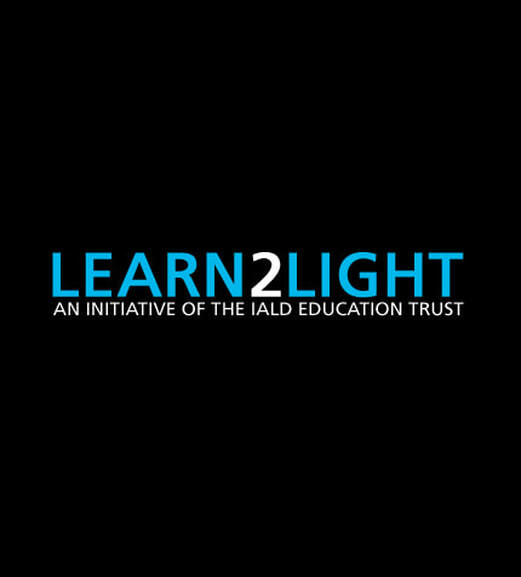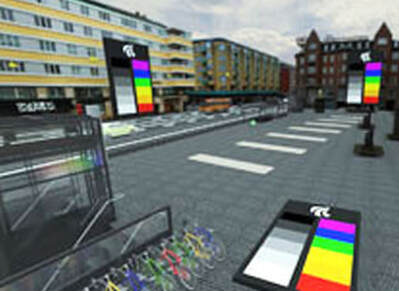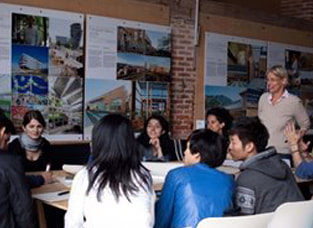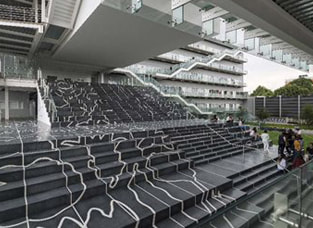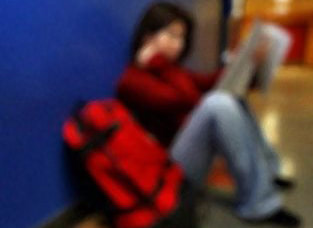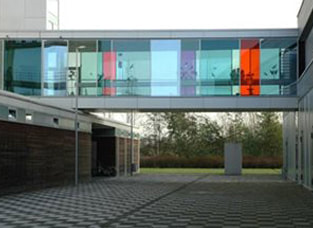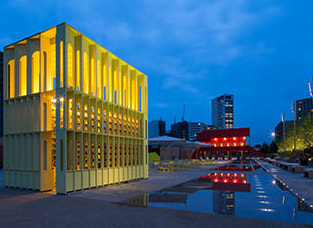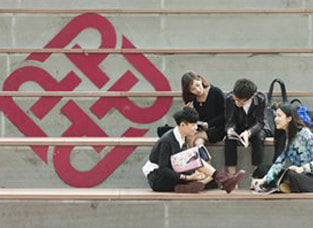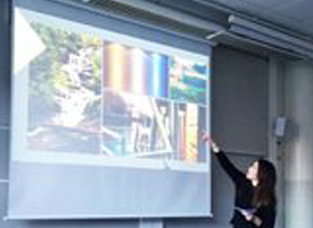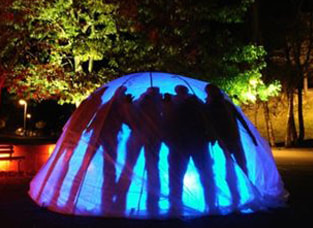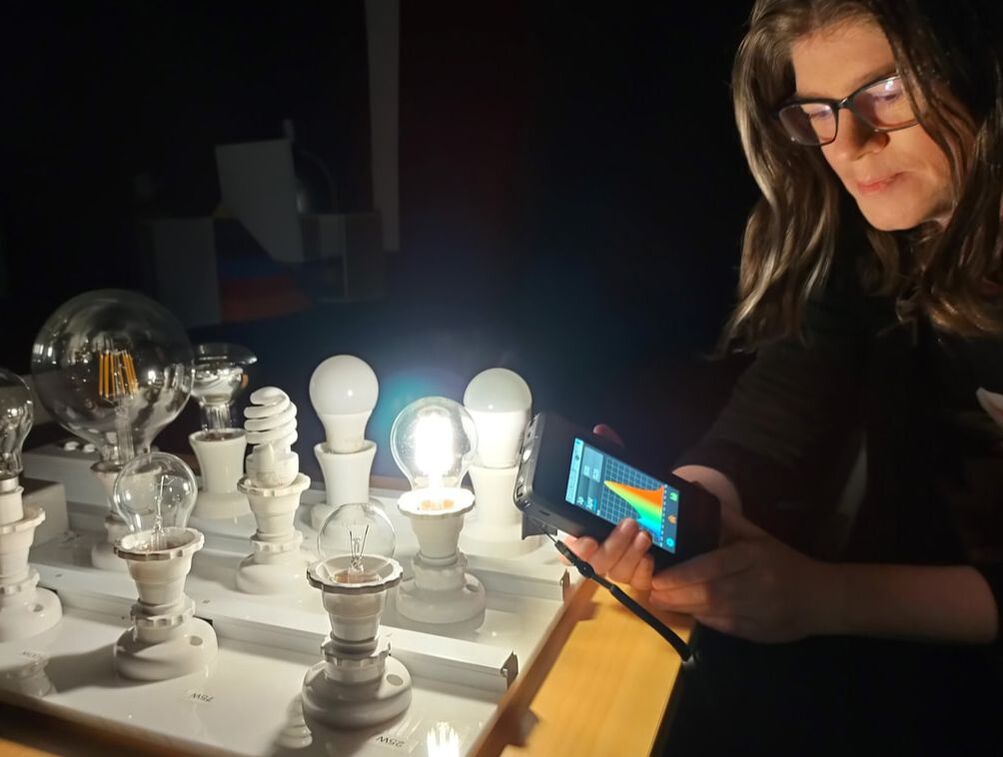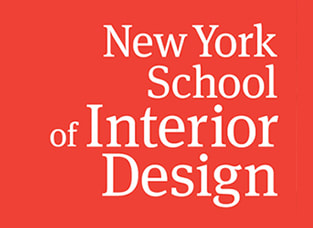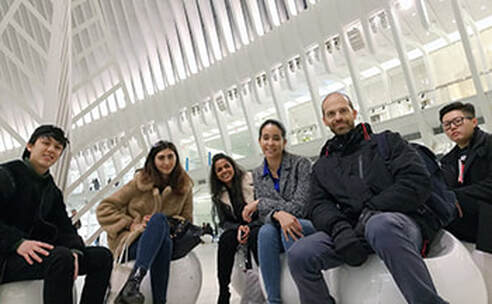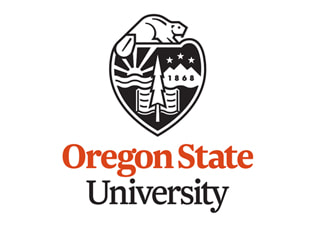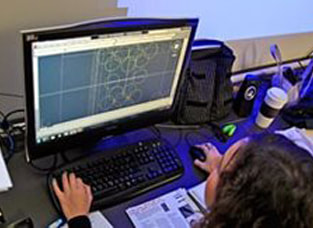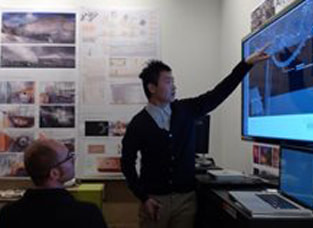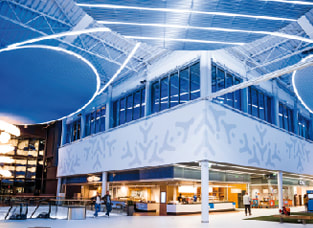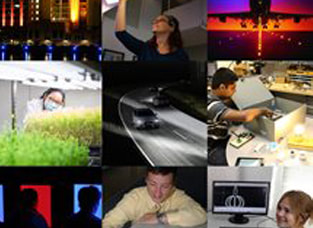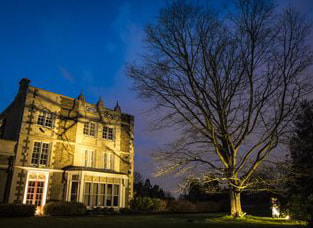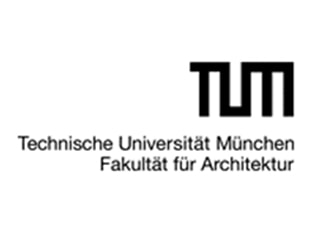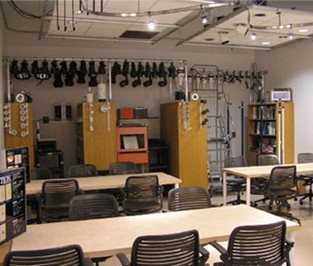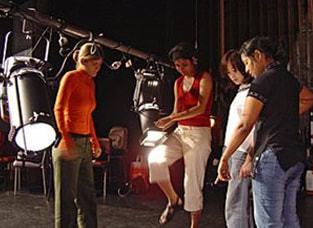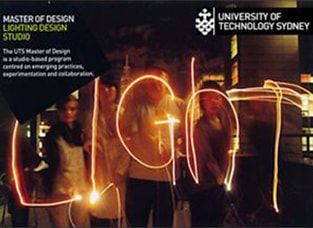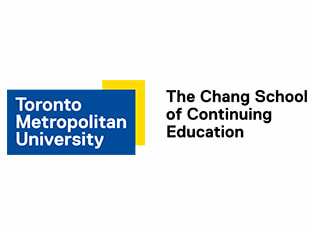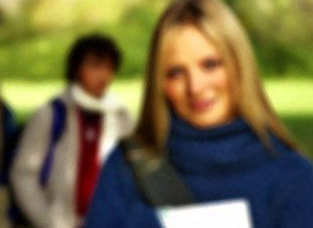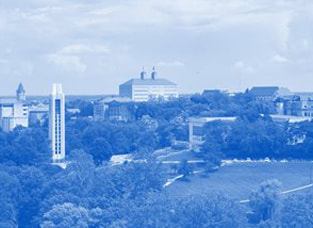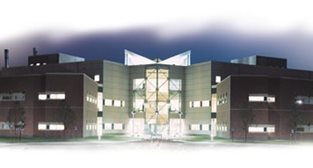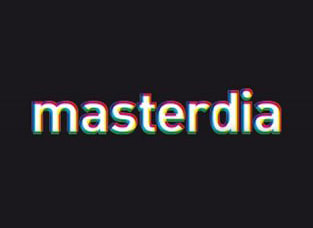|
The Learn2Light project was created in 2005 by the late Phil Gabriel, an award-winning Canadian lighting designer who served as President of both the IALD and the IALD Education Trust, all while practicing from the same corner office in Ottawa from 1983 until his passing in 2014. His practice continues today, led by longtime partner Andrew MacKinnon, Associate IALD.
Learn2Light offers an overview of schools that offer diverse educational programs in design, engineering and science with a focus in architectural lighting design. These schools have a minimum of one instructor or professor who devotes the majority of their time to lighting design. Individual programs offer degrees at bachelors, masters or doctoral levels as well as certificates and minors in architectural lighting design. Degrees may be offered in the field of lighting design specifically or in other cognate disciplines including architecture, interior design or engineering. For information on adding your degree-granting program to this page, please send an email to IALD Education Trust Director May Schlotzhauer, at [email protected]. |
SELECTED SCHOOLS
Aalborg University DenmarkWebsite: Aalborg University
Department: Architecture, Design & Media Technology Degree: Master of Science Programme in Lighting Design |
Program Overview: As a master’s student in Lighting Design at AAU-Cph, you will be working with both daylight and artificial light in the crossing between three scientific fields; media technology, engineering and architecture. The purpose of the programme is for graduates to have an academic- technological as well as process-related approach to lighting design, and not least, a particular sense in designing with light in virtual and physical spaces.
During the programme, you will be working with the interplay between the basic physical elements of light, lighting technologies, digital media, context, human factors, light perception and creative knowledge-based design methods.
Contact/Faculty:
Ellen Kathrine Hansen, M.Arch., MAA, Ph.D.
Associated Professor, Head of Lighting Design
[email protected]
Tel: +45 2172 3181
Curriculum Overview:
First Semester: Seeing the Light project
Second Semester: Creating with Light: Interactive Lighting project
Third Semester: Lighting Design Innovation
Fourth Semester: Master's Thesis in Lighting Design
For full curriculum details, please visit www.light.aau.dk/msc-education.
During the programme, you will be working with the interplay between the basic physical elements of light, lighting technologies, digital media, context, human factors, light perception and creative knowledge-based design methods.
Contact/Faculty:
Ellen Kathrine Hansen, M.Arch., MAA, Ph.D.
Associated Professor, Head of Lighting Design
[email protected]
Tel: +45 2172 3181
Curriculum Overview:
First Semester: Seeing the Light project
Second Semester: Creating with Light: Interactive Lighting project
Third Semester: Lighting Design Innovation
Fourth Semester: Master's Thesis in Lighting Design
For full curriculum details, please visit www.light.aau.dk/msc-education.
SCHOOL LOCATIONA.C. Meyers Vænge 15 DK-2450 Copenhagen SV Denmark |
DEGREES/CERTIFICATES OFFEREDMasters Programs
|
BHA School of LightingWebsite: www.bhaschooloflighting.co.za
Degrees/Certificates: Advanced Diploma in Illumination Engineering (NQ7), Master Diploma (NQ8) & Certificate Programs |
Program Overview: BHA School of Lighting aspires to be known for its excellence in teaching, intensive research, effective public service and community engagement. The school prepares diverse and competitive graduates for success in a global build environment industry and aims to contribute to society through the pursuit of education, learning and research at the highest international levels of excellence.
Founded in 2012 by Philip Hammond, BHA School of Lighting offers Practical, Relevant & Contemporary Lighting courses designed for architects, electrical engineers, interior designers and lighting professionals.
A variety of e-learning courses are offered from the entry level Foundation Lighting Course through to the Advanced Diploma and Master Diploma in Illumination Engineering Courses. Other courses include Photometry, Lighting Economics, Relux Lighting Design Software courses and more…
The course curriculums meet international standards and are fully compliant with CIBSE (Construction Industry Building Service Engineers) qualification requirements.
Join BHA School of Lighting’s “enLightened Community”, a community developed to share knowledge with build environment professionals through a series of industry accredited live webinars and weekly meetings.
Contact:
Director and Educator
Philip Hammond, Educator IALD
[email protected]
School Location: Cape Town, South Africa
Curriculum:
The curriculum covers all aspects of illumination engineering including history of lighting and each type of lighting source and system in detail. For more info visit www.bhaschooloflighting.co.za/courses.
Founded in 2012 by Philip Hammond, BHA School of Lighting offers Practical, Relevant & Contemporary Lighting courses designed for architects, electrical engineers, interior designers and lighting professionals.
A variety of e-learning courses are offered from the entry level Foundation Lighting Course through to the Advanced Diploma and Master Diploma in Illumination Engineering Courses. Other courses include Photometry, Lighting Economics, Relux Lighting Design Software courses and more…
The course curriculums meet international standards and are fully compliant with CIBSE (Construction Industry Building Service Engineers) qualification requirements.
Join BHA School of Lighting’s “enLightened Community”, a community developed to share knowledge with build environment professionals through a series of industry accredited live webinars and weekly meetings.
Contact:
Director and Educator
Philip Hammond, Educator IALD
[email protected]
School Location: Cape Town, South Africa
Curriculum:
The curriculum covers all aspects of illumination engineering including history of lighting and each type of lighting source and system in detail. For more info visit www.bhaschooloflighting.co.za/courses.
SCHOOL LOCATION20 Arena North, Royal Ascot |
DEGREES/CERTIFICATES OFFEREDCertificate Programs |
Brandi Institute For Light And DesignWebsite: Brandi Institute For Light And Design
Degrees/Certificates: Certificate in Lighting Design |
Program Overview: The Brandi Institute's Lighting Design Certificate offers intensive study in lighting design for individuals who are beginning or willing to further push their career in architecture and/or lighting design. The international program for lighting design combines theoretical principles and practical relevance, which entails that it does not have a fixed lecture theatre. The location of courses depend on the topic of each study unit, be it a floating home on the river, an office floor in the city, the hull of a ship or an old warehouse in the port. The program covers a broad spectrum, ranging from artificial lighting, daylight design, masterplan design and electrical engineering to basic project management units. The Institute is solely committed to good lighting and follows a human-centered design approach, which is expressed in a practice-oriented curriculum. Each Master Class comprises lectures, workshops and mock-ups and will be taught by renowned architects and lighting designers such as Jeff Miller, IALD, Sevil Peach, Ken Yeang or Kaoru Mende, IALD.
Contact/Faculty:
Ulrike Brandi
[email protected]
Tel +49 40 369 635 95
Fax +49 40 369 635 11
Curriculum: The Brandi Institute for Licht and Design offers four Master Classes:
1. Essentials of Light
2. High-Performance Energy Buildings
3. Workplace Design
4. Health - Wellness - Light
Contact/Faculty:
Ulrike Brandi
[email protected]
Tel +49 40 369 635 95
Fax +49 40 369 635 11
Curriculum: The Brandi Institute for Licht and Design offers four Master Classes:
1. Essentials of Light
2. High-Performance Energy Buildings
3. Workplace Design
4. Health - Wellness - Light
SCHOOL LOCATIONBrandi Institute for Light and Design Stadtdeich 27 20097 Hamburg, Germany |
DEGREES/CERTIFICATES OFFEREDCertificate Programs
|
CENTROSitio Web / Web Site: CENTRO
Programa / Program: Especialización en Diseño de Iluminación Interior (Interior Lighting Design Specialization) |
Departamento / Department: Arquitectura de Interiores (Interior Architecture)
Licenciatura / Degree: Specialization (Posgraduate)
Idioma / Language: Español (Spanish)
Resumen del Programa / Program Overview: En este posgrado aprenderás a realizar proyectos de iluminación creativos y funcionales. Aplicarás metodologías de diseño para desarrollar un proyecto conceptual de iluminación y/o luminarias. Conocerás los factores del negocio y la gestión de proyectos para desarrollar una propuesta cuidando la ergonomía y el confort visual
In this postgraduate you will learn to carry out creative and functional lighting projects. You will apply design methodologies to develop a conceptual project of lighting and / or luminaires. You will know the business factors and project management to develop a proposal with considerations to ergonomics and visual comfort.
Contacto / Contact:
[email protected]
55 2789 9000 Exts. 8803, 8935
Licenciatura / Degree: Specialization (Posgraduate)
Idioma / Language: Español (Spanish)
Resumen del Programa / Program Overview: En este posgrado aprenderás a realizar proyectos de iluminación creativos y funcionales. Aplicarás metodologías de diseño para desarrollar un proyecto conceptual de iluminación y/o luminarias. Conocerás los factores del negocio y la gestión de proyectos para desarrollar una propuesta cuidando la ergonomía y el confort visual
In this postgraduate you will learn to carry out creative and functional lighting projects. You will apply design methodologies to develop a conceptual project of lighting and / or luminaires. You will know the business factors and project management to develop a proposal with considerations to ergonomics and visual comfort.
Contacto / Contact:
[email protected]
55 2789 9000 Exts. 8803, 8935
SCHOOL LOCATIONAv. Constituyentes 455, América |
DEGREES/CERTIFICATES OFFEREDMasters Programs |
Hawk University Of Applied Sciences And Arts |
Prof. Dr. Ing. Cornelia Moosmann
[email protected]
Prof. Dipl.-Ing. Andreas Schulz
[email protected]
Dipl.-Ing. Norbert Wasserfurth
[email protected]
More than 20 professors and teachers educate in the interdisciplinary course concept.
Curriculum: The first part of the course deals with the basics of light, space, perception and engineering. In the second part, the students deepen their experience with a strong practice-oriented approach. Some subjects include:
[email protected]
Prof. Dipl.-Ing. Andreas Schulz
[email protected]
Dipl.-Ing. Norbert Wasserfurth
[email protected]
More than 20 professors and teachers educate in the interdisciplinary course concept.
Curriculum: The first part of the course deals with the basics of light, space, perception and engineering. In the second part, the students deepen their experience with a strong practice-oriented approach. Some subjects include:
- Theory of Design
- Three-Dimensional Design
- Lighting Design in Practice
- CAD 2D + 3D
- CAD 3 + 4
- History of Art and Culture
- Office Management
- perception
- light and health
- Lighting Engineering
- Daylighting Basics
- Product Design Basics
- Interior Design Basics
- Exterior Design Basics
- Special Lighting Design Fields
- The final six months (6.semester) is devoted to the student's thesis
SCHOOL LOCATIONHAWK University of Applied Sciences and Arts Hildesheim/Holzminden/Göttingen Field of Competence Lighting Design Renatastraße 11, 31134 Hildesheim, Germany |
DEGREES/CERTIFICATES OFFEREDBachelors Programs
Masters Programs |
Hochschule Wismar Full-Time Master's ProgrammeWebsite: Hochschule Wismar
|
Department: Architecture
Language: English
Degree: Master of Architectural Lighting Design
Program Overview: The aim of the course in Architectural Lighting Design is to train the students in the application of daylight in architecture as well as in artificial lighting. Light is considered to be essential in the perception of architecture. Therefore the students will be trained in the physics of light and its application in architecture regarding the interior climate and the needs for the human feeling of comfort as basis for the development of own lighting design concepts. By working on own projects and practical experiments the students can deepen their knowledge achieved in theoretical lectures.
Contact/Faculty:
Prof. Michael F. Rohde
[email protected]
Curriculum:
Language: English
Degree: Master of Architectural Lighting Design
Program Overview: The aim of the course in Architectural Lighting Design is to train the students in the application of daylight in architecture as well as in artificial lighting. Light is considered to be essential in the perception of architecture. Therefore the students will be trained in the physics of light and its application in architecture regarding the interior climate and the needs for the human feeling of comfort as basis for the development of own lighting design concepts. By working on own projects and practical experiments the students can deepen their knowledge achieved in theoretical lectures.
Contact/Faculty:
Prof. Michael F. Rohde
[email protected]
Curriculum:
- Lighting Design
- Lighting Science
- Lighting Design and Technology 1/2
- Lighting and Economics
- Design Project 1/2
- Lighting and Sustainable Building 1
- Lighting and Sustainable Building 2
SCHOOL LOCATIONHochschule Wismar University of Applied Sciences Technology, Business and Design Faculty of Architecture and Design Postfach 1210 23952 Wismar |
DEGREES/CERTIFICATES OFFEREDMasters Programs
|
Hochschule Wismar Professional Part-Time Master's Programme |
Department: Hochschule Wismar - University of Applied Sciences: Technology, Business and Design
Degree: Master of Arts (M.A.)
Program Overview: WINGS, the distance learning centre at the University of Wismar, offers an English-language part-time programme called Architectural Lighting and Design Management. The five semester programme leads to an internationally recognised Master of Arts (M.A.) qualification.
This combination of lighting design and management taught by lecturers of various nationalities is unique in the academic world and is coupled with workshops in Wismar, Berlin and Bangkok. In these workshops, lecturers teach and instruct on study projects. During the one-week workshops, the lighting designers-to-be have the excellent opportunity to gain practical experience in lighting design as well as in strategic project management.
For courses starting in September, the deadline for enrollment is 30 August of each year.
Contact/Faculty:
Robert Friedrich
B.A. Business Administration
Tel +49 (3841) 7537-229
[email protected]
Curriculum:
Flexible study and regular self-study phases give students sufficient opportunity to freely organise their time and study parallel to their profession. Among other things, the lighting designers-to-be study market analysis tools, management methods and the development of business plans.
Examples of courses include:
Degree: Master of Arts (M.A.)
Program Overview: WINGS, the distance learning centre at the University of Wismar, offers an English-language part-time programme called Architectural Lighting and Design Management. The five semester programme leads to an internationally recognised Master of Arts (M.A.) qualification.
This combination of lighting design and management taught by lecturers of various nationalities is unique in the academic world and is coupled with workshops in Wismar, Berlin and Bangkok. In these workshops, lecturers teach and instruct on study projects. During the one-week workshops, the lighting designers-to-be have the excellent opportunity to gain practical experience in lighting design as well as in strategic project management.
For courses starting in September, the deadline for enrollment is 30 August of each year.
Contact/Faculty:
Robert Friedrich
B.A. Business Administration
Tel +49 (3841) 7537-229
[email protected]
Curriculum:
Flexible study and regular self-study phases give students sufficient opportunity to freely organise their time and study parallel to their profession. Among other things, the lighting designers-to-be study market analysis tools, management methods and the development of business plans.
Examples of courses include:
- Daylighting
- Strategic Management
- Detailed Lighting Design
- Design and Economics
- Branding and Marketing
- Artificial Lighting
- Lighting Application and Sustainability
SCHOOL LOCATIONWismar International Graduation Services GmbH WINGS - A company of the University of Wismar Philipp-Müller-Strasse 12 23 966 Wismar, Germany |
DEGREES/CERTIFICATES OFFEREDMasters Programs
|
Hong Kong Polytechnic University |
Language: English
Degree: Bachelor Degree; Master of Science; Master of Engineering; Master of Philosophy (MPhil) with Focus in Lighting; and PhD with a Focus in Lighting
Program Overview: Lighting education and research have a long and famous history in Department of Building Services Engineering at the Hong Kong Polytechnic University. In early 1982, Dr. A.M. Marsden, an expert in lighting and the past president of CIE, was the Founding Head of Department. Dr. Marsden was also the author of the famous book “Lamps and Lighting”, which is one of the textbook being widely used in various lighting programs. Key research initiatives include: lighting spectrum and human vision; daylighting and high performance building; energy and environment; and lighting applications.
Contact/Faculty:
Dr. Minchen Wei
Assistant Professor
[email protected]
+852-3400 3606
Curriculum:
• Lighting Technology
• Lighting Engineering
• Light, Man and Environment
• Research Project
• Dissertation and Thesis
Student Funding Opportunities:
Various studentship opportunities for MPhil and PhD students are available. These are typically awarded as stipends and are approximately HKD$15,000 per month. Exchange student opportunities and research associate opportunities are also available. For questions or for more information, please contact Dr. Minchen Wei.
Degree: Bachelor Degree; Master of Science; Master of Engineering; Master of Philosophy (MPhil) with Focus in Lighting; and PhD with a Focus in Lighting
Program Overview: Lighting education and research have a long and famous history in Department of Building Services Engineering at the Hong Kong Polytechnic University. In early 1982, Dr. A.M. Marsden, an expert in lighting and the past president of CIE, was the Founding Head of Department. Dr. Marsden was also the author of the famous book “Lamps and Lighting”, which is one of the textbook being widely used in various lighting programs. Key research initiatives include: lighting spectrum and human vision; daylighting and high performance building; energy and environment; and lighting applications.
Contact/Faculty:
Dr. Minchen Wei
Assistant Professor
[email protected]
+852-3400 3606
Curriculum:
• Lighting Technology
• Lighting Engineering
• Light, Man and Environment
• Research Project
• Dissertation and Thesis
Student Funding Opportunities:
Various studentship opportunities for MPhil and PhD students are available. These are typically awarded as stipends and are approximately HKD$15,000 per month. Exchange student opportunities and research associate opportunities are also available. For questions or for more information, please contact Dr. Minchen Wei.
SCHOOL LOCATIONThe Hong Kong Polytechnic University 11 Yuk Choi Road Hung Hom, Kowloon, Hong Kong |
DEGREES/CERTIFICATES OFFEREDBachelors Programs Masters Programs Doctoral Programs |
Jönköping University | School of EngineeringWebsite: Jönköping University | School of Engineering
Department: Department of Construction Engineering and Lighting Science |
Degrees: Undergraduate Program in Lighting Design
Program Overview: The evolution of the program is based on a solid and well balanced combination of function and aesthetic, business and scientific approaches. We work in close collaboration with the lighting community for the development of our education to meet the needs and requirements of the profession. Students are educated to get the finest knowledge of the latest technology in daylight and electrical lighting for all types of applications. They develop their critical view on it regarding essential aspects such as sustainability. By the end of their studies the students are apt to produce and communicate original lighting design concepts tuned to the client’s brief, integrated to the space and well adapted to the specific needs of the end-users as well as to the lighting rules and regulations. The third year of the program is entirely offered in English to welcome international students from the fields of lighting design, architecture, landscape architecture, interior design & others. Jönköping University is located next to the big lake Vättern where you can explore the fantastic nature and the “Nordic light”.
Contact/Faculty:
Lecturer, Program Manager Lighting Design
Johanna Glans
[email protected]
Tel +46 (0)36 101907
Curriculum:
Program Overview: The evolution of the program is based on a solid and well balanced combination of function and aesthetic, business and scientific approaches. We work in close collaboration with the lighting community for the development of our education to meet the needs and requirements of the profession. Students are educated to get the finest knowledge of the latest technology in daylight and electrical lighting for all types of applications. They develop their critical view on it regarding essential aspects such as sustainability. By the end of their studies the students are apt to produce and communicate original lighting design concepts tuned to the client’s brief, integrated to the space and well adapted to the specific needs of the end-users as well as to the lighting rules and regulations. The third year of the program is entirely offered in English to welcome international students from the fields of lighting design, architecture, landscape architecture, interior design & others. Jönköping University is located next to the big lake Vättern where you can explore the fantastic nature and the “Nordic light”.
Contact/Faculty:
Lecturer, Program Manager Lighting Design
Johanna Glans
[email protected]
Tel +46 (0)36 101907
Curriculum:
- Applied Mathematics and Physics
- Create with Light
- Perception and Communication
- Basics in Lighting Technology
- Leadership and Project Management
- Interior Lighting Design Project
- Lighting Project Support
- Exterior Lighting Design Project
- Lighting Technology and Quality Assurance
- Lighting Design in the Building Process
- Lighting for Health and Wellbeing
- Business-based Course Internship
- Scientific Methods and Communication
- Economics, Entrepreneurship and Marketing
- Luminaire Design
- Lighting Masterplan
- Daylighting
- Light for Exhibitions and Events
- Thesis on Product Development Specializing in Lighting Design
- Entrepreneurship
- Lighting Science
SCHOOL LOCATIONJönköping University Gjuterigatan 5, 553 18 Jönköping, Sweden |
DEGREES/CERTIFICATES OFFEREDBachelors Programs
|
KTH, Royal Institute Of Technology |
Department: Architecture and the Built Environment / Architectural Lighting Design
Language: English
Degree: Master of Science, Architectural Lighting Design (One Year programme)
Program Overview: The profile for the program is based on a new approach for light and light planning. The learning process is a combination of visual and technical based experience and knowledge directed on design, technique and health. The educational idea is built on a comprehensive view, where theoretical knowledge will be combined with practical applications in laboratory experiments, project work and full scale studies.
The international profile of the program will offer a deepening discussion and understanding of cultural based views and values.
Contact/Faculty:
Rodrigo Muro, Program Director + Lecturer, [email protected]
Martin Sjöstrand, International Masters Coordinator, [email protected]
Ute Besenecker, Associate Professor
Federico Favero, Researcher + lecturer, [email protected]
Isabel Dominguez, Lecturer and Master Thesis Coordinator
Gerhard Rehm, Lecturer
Compulsory Courses:
Language: English
Degree: Master of Science, Architectural Lighting Design (One Year programme)
Program Overview: The profile for the program is based on a new approach for light and light planning. The learning process is a combination of visual and technical based experience and knowledge directed on design, technique and health. The educational idea is built on a comprehensive view, where theoretical knowledge will be combined with practical applications in laboratory experiments, project work and full scale studies.
The international profile of the program will offer a deepening discussion and understanding of cultural based views and values.
Contact/Faculty:
Rodrigo Muro, Program Director + Lecturer, [email protected]
Martin Sjöstrand, International Masters Coordinator, [email protected]
Ute Besenecker, Associate Professor
Federico Favero, Researcher + lecturer, [email protected]
Isabel Dominguez, Lecturer and Master Thesis Coordinator
Gerhard Rehm, Lecturer
Compulsory Courses:
- Light and Humans
- Light and room l, Outdoor Lighting
- Light and Science
- Light and room ll, Indoor Lighting
- Master Thesis Project, 10 weeks
SCHOOL LOCATIONKTH Architecture School Osquars Backe 5 114 28 Stockholm, Sweden |
DEGREES/CERTIFICATES OFFEREDMasters Programs
|
Massey UniversityWebsite: Graduate Certificate in Science and Technology Lighting
Name of Program: Graduate Certificate in Science and Technology (Lighting) |
Department: School of Built Environment, Tel No: +64 9 414 0800
Program Overview: Massey University offers a Graduate Certificate in Science & Technology with a specialisation in lighting. This part-time program is available online and is completed over two years. Fundamental principles of lighting are learned, from basic terms to key design principles, as well as lighting technology. Successful completion achieves the academic requirements for membership of the Illuminating Engineering Society of Australia and New Zealand (IESANZ).
Program Overview: Massey University offers a Graduate Certificate in Science & Technology with a specialisation in lighting. This part-time program is available online and is completed over two years. Fundamental principles of lighting are learned, from basic terms to key design principles, as well as lighting technology. Successful completion achieves the academic requirements for membership of the Illuminating Engineering Society of Australia and New Zealand (IESANZ).
|
Current number of students:
20 per year level |
Curriculum Overview:
Paper 1: This course considers photometric concepts and develops the principles of light control and distribution. Human visual processes are considered, and colour science is introduced.
Paper 2: This course develops the principles of light production and considers the application of sources in lighting design. The requirements for control gear are considered together with the application of optical control to achieve accurate and efficient distribution of luminous flux. Methods of photometric testing are investigated.
Paper 3: This course develops the principles of interior lighting design. The human requirements and statutory regulations are investigated. Lighting designs are undertaken to demonstrate the techniques involved. The utilisation of daylight to enhance lighting installations and assist with energy savings is considered. Creative lighting techniques are investigated.
Paper 4: This course considers the efficiency of light sources in producing and distributing luminous flux. Lighting controls for energy saving applications are investigated. Principles of exterior lighting for workplaces are considered, and the floodlighting of building facades is developed. The design of landscape lighting for commercial and public spaces is undertaken. The statutory requirements for, and the techniques associated with, roadway and pedestrian lighting are considered. The design of lighting for sports grounds is undertaken.
Paper 1: This course considers photometric concepts and develops the principles of light control and distribution. Human visual processes are considered, and colour science is introduced.
Paper 2: This course develops the principles of light production and considers the application of sources in lighting design. The requirements for control gear are considered together with the application of optical control to achieve accurate and efficient distribution of luminous flux. Methods of photometric testing are investigated.
Paper 3: This course develops the principles of interior lighting design. The human requirements and statutory regulations are investigated. Lighting designs are undertaken to demonstrate the techniques involved. The utilisation of daylight to enhance lighting installations and assist with energy savings is considered. Creative lighting techniques are investigated.
Paper 4: This course considers the efficiency of light sources in producing and distributing luminous flux. Lighting controls for energy saving applications are investigated. Principles of exterior lighting for workplaces are considered, and the floodlighting of building facades is developed. The design of landscape lighting for commercial and public spaces is undertaken. The statutory requirements for, and the techniques associated with, roadway and pedestrian lighting are considered. The design of lighting for sports grounds is undertaken.
SCHOOL LOCATIONPhysical address: Massey University Auckland (East Precinct) Albany Expressway (SH17) Albany 0632 New Zealand Postal address: Massey University Auckland Private Bag 102904 North Shore Auckland 0745 New Zealand |
DEGREES/CERTIFICATES OFFERED |
New York School Of Interior DesignWebsite: New York School Of Interior Design
Name of Program: Master of Professional Studies in Lighting Design |
Department: Lighting Design
Degree: Masters of Professional Studies
Program Overview: The Master of Professional Studies in Lighting Design (MPS-L) is a one-year, post-professional degree that provides rigorous education in the art and science of architectural lighting design. All classes are structured for working professionals, with class offered in the evenings. New in Fall 2020, New York School of Interior Design will offer a distance learning option for this program.
Remote and onsite MPS-L students will meet together in real-time using tools such as Zoom and Canvas for collaborative class experiences. In addition, all students will gather in New York City for 4-day on-site intensive residencies during the Fall, Spring and Summer semesters/sessions. These residencies will include hands-on work in the NYSID Lighting Laboratory, lighting tours and focusing workshops, and will coincide with industry events like LEDucation.
The NYSID program balances conceptual and practical techniques for successful lighting designs. The curriculum includes studio classes which cover both conceptual designs and hands-on projects, allowing students to tailor their portfolios with a blend of commercial, residential and retail projects. Design studios are supplemented by courses covering the science of light, luminaires and light sources, natural and artificial lighting.
The MPS-L faculty are working professionals, including studio principals, recipients of Lumen and Illumination Awards, and lighting industry leaders, as well as chairs from various lighting industry committees. The faculty and students that you meet will become your mentors and peers as you begin a professional career in lighting design.
The program is a full-time, one full year commitment
Classes are in the evenings, Monday through Thursday, with an additional 4-day intensive offered each semester.
The MPS-Lighting distance option has been approved by the New York State Education Department and is pending approval by the National Association of Schools of Art and Design (NASAD), one of the New York School of Interior Design’s institutional accreditors.
Degree: Masters of Professional Studies
Program Overview: The Master of Professional Studies in Lighting Design (MPS-L) is a one-year, post-professional degree that provides rigorous education in the art and science of architectural lighting design. All classes are structured for working professionals, with class offered in the evenings. New in Fall 2020, New York School of Interior Design will offer a distance learning option for this program.
Remote and onsite MPS-L students will meet together in real-time using tools such as Zoom and Canvas for collaborative class experiences. In addition, all students will gather in New York City for 4-day on-site intensive residencies during the Fall, Spring and Summer semesters/sessions. These residencies will include hands-on work in the NYSID Lighting Laboratory, lighting tours and focusing workshops, and will coincide with industry events like LEDucation.
The NYSID program balances conceptual and practical techniques for successful lighting designs. The curriculum includes studio classes which cover both conceptual designs and hands-on projects, allowing students to tailor their portfolios with a blend of commercial, residential and retail projects. Design studios are supplemented by courses covering the science of light, luminaires and light sources, natural and artificial lighting.
The MPS-L faculty are working professionals, including studio principals, recipients of Lumen and Illumination Awards, and lighting industry leaders, as well as chairs from various lighting industry committees. The faculty and students that you meet will become your mentors and peers as you begin a professional career in lighting design.
The program is a full-time, one full year commitment
Classes are in the evenings, Monday through Thursday, with an additional 4-day intensive offered each semester.
- The program is offered onsite or online.
- Applicants must have a degree in interior design, architecture, engineering or theatrical lighting (related fields will be considered if applicant is able to demonstrate aptitude and sufficient preparation to succeed)
- All applicants must submit a portfolio of recent work, including architectural and interior designs, photography, sketches, and lighting studies.
The MPS-Lighting distance option has been approved by the New York State Education Department and is pending approval by the National Association of Schools of Art and Design (NASAD), one of the New York School of Interior Design’s institutional accreditors.
|
Contact/Faculty:
Shaun Fillion, LC Educator IALD Program Director | MPS-L Lighting Design +1 917 379 6257 [email protected] Curriculum: Fall Semester (12 credits) Lighting Design Studio I (3) Lighting Laboratory (1) Science of Light (2) Lighting Design Process (2) Rendering & Representation for Lighting Design (2) Light Source Selection and Evaluation (2) |
Spring Semester (12 credits)
Lighting Design Studio II (4) History of Lighting in New York City (2) Luminaire Design (2) Lighting Controls and Systems Technology (2) Business of Light (2) Summer Session (6 credits) Lighting Design Studio III (2) Health Factors of Lighting and Daylighting (2) Retail, Art and Exhibition Lighting (2) |
SCHOOL LOCATIONKTH Architecture School Osquars Backe 5 114 28 Stockholm, Sweden |
DEGREES/CERTIFICATES OFFEREDMasters Programs
|
Oregon State University |
Degrees Offered:
BS in Architectural Engineering, MS, MEng, and PhD in Civil and Construction Engineering (with concentration in Architectural Engineering / Lighting)
Program Overview:
Students following the lighting concentration in the Architectural Engineering undergraduate curriculum take a minimum of 5 courses in lighting, plus a 2-course capstone project where they emphasize lighting within a team-based interdisciplinary design project. The curriculum helps students acquire the knowledge and skills to be successful in professional practice in the lighting industry. Foundational content includes terminology, photometry, luminous radiative transfer, light sources including daylight, luminaires, controls, and computational procedures. Application content includes the design and analysis of lighting systems (electric and daylight), including establishment of design criteria, lighting modes and subjective effects, software-based calculations, design for compliance with industry standards, and documentation. By graduation, students are producing design solutions that balance competing criteria, including psychological reinforcement, human health, and energy use. There are opportunities for internships through the Civil Engineering Cooperative Education Program.
Contacts:
Megan Roegner
Head Advisor (Undergraduate)
Tel: +1 541 737 6576
[email protected]
Whitney Korthauer
Graduate Coordinator
Tel: +1 541 737 4934
[email protected]
Faculty in the Lighting Concentration:
Kevin Houser, PhD, PE (NE), FIES, LC, LEED AP
[email protected]
Clotilde Pierson, PhD
[email protected]
Tuition:
Tuition varies with the degree program and residence status. For estimates about cost of attendance at Oregon State University, see: https://financialaid.oregonstate.edu/cost-attendance
Graduates per Year:
Contact faculty in lighting concentration for recent data.
Curriculum:
And overview and sample curriculum plan for the Bachelor of Science in Architectural Engineering is available at: https://cce.oregonstate.edu/architectural-engineering
Courses especially relevant to the lighting concentration include
BS in Architectural Engineering, MS, MEng, and PhD in Civil and Construction Engineering (with concentration in Architectural Engineering / Lighting)
Program Overview:
Students following the lighting concentration in the Architectural Engineering undergraduate curriculum take a minimum of 5 courses in lighting, plus a 2-course capstone project where they emphasize lighting within a team-based interdisciplinary design project. The curriculum helps students acquire the knowledge and skills to be successful in professional practice in the lighting industry. Foundational content includes terminology, photometry, luminous radiative transfer, light sources including daylight, luminaires, controls, and computational procedures. Application content includes the design and analysis of lighting systems (electric and daylight), including establishment of design criteria, lighting modes and subjective effects, software-based calculations, design for compliance with industry standards, and documentation. By graduation, students are producing design solutions that balance competing criteria, including psychological reinforcement, human health, and energy use. There are opportunities for internships through the Civil Engineering Cooperative Education Program.
Contacts:
Megan Roegner
Head Advisor (Undergraduate)
Tel: +1 541 737 6576
[email protected]
Whitney Korthauer
Graduate Coordinator
Tel: +1 541 737 4934
[email protected]
Faculty in the Lighting Concentration:
Kevin Houser, PhD, PE (NE), FIES, LC, LEED AP
[email protected]
Clotilde Pierson, PhD
[email protected]
Tuition:
Tuition varies with the degree program and residence status. For estimates about cost of attendance at Oregon State University, see: https://financialaid.oregonstate.edu/cost-attendance
Graduates per Year:
Contact faculty in lighting concentration for recent data.
Curriculum:
And overview and sample curriculum plan for the Bachelor of Science in Architectural Engineering is available at: https://cce.oregonstate.edu/architectural-engineering
Courses especially relevant to the lighting concentration include
- Architecture Studio
- Fundamentals for Lighting Design
- Lighting Design for the Built Environment I
- Lighting Design for the Built Environment II
- Daylighting
- Parametric Design in Architectural Engineering
- Capstone Design Project
SCHOOL LOCATIONSchool of Civil and Construction Engineering College of Engineering Oregon State University |
DEGREES/CERTIFICATES OFFERED |
Otis College Of Art And DesignDepartment: Department of Architecture/Landscape/Interiors in collaboration with Continuing Education Division
Web site: Otis College Of Art And Design |
Degree: Lighting Design Certificate
Program Overview: The Lighting Design Certificate program provides intensive study in lighting design for individuals who are beginning a new career, making a career change or seeking to enhance their existing skills in or current study of architecture and/or design. The program combines the theoretical study of lighting conditions and effects with the acquisition of technical skills for design of lighting systems in both indoor and outdoor spaces. The program prepares its graduates to enter and be competitive in the field of lighting design within one calendar year (for Continuing Education [CE] students), including fall, spring and summer semesters.
Contact/Faculty:
Linda Pollari
Chair, Architecture/Landscape/Interiors
[email protected]
Curriculum:
• (3) Pre-requisites (which may be waived with equivalent experience) including: Drafting I, Drafting II and AutoCad for Interior Design
• (5) Core courses including: Lighting Fundamentals, Advanced Lighting Design, Lighting Internship, Human Factors/Light & Health and Luminaire and Control Technologies. www.otis.edu/ce
Program Overview: The Lighting Design Certificate program provides intensive study in lighting design for individuals who are beginning a new career, making a career change or seeking to enhance their existing skills in or current study of architecture and/or design. The program combines the theoretical study of lighting conditions and effects with the acquisition of technical skills for design of lighting systems in both indoor and outdoor spaces. The program prepares its graduates to enter and be competitive in the field of lighting design within one calendar year (for Continuing Education [CE] students), including fall, spring and summer semesters.
Contact/Faculty:
Linda Pollari
Chair, Architecture/Landscape/Interiors
[email protected]
Curriculum:
• (3) Pre-requisites (which may be waived with equivalent experience) including: Drafting I, Drafting II and AutoCad for Interior Design
• (5) Core courses including: Lighting Fundamentals, Advanced Lighting Design, Lighting Internship, Human Factors/Light & Health and Luminaire and Control Technologies. www.otis.edu/ce
SCHOOL LOCATIONOtis College of Art and Design 9045 Lincoln Boulevard Los Angeles, CA 90045 |
DEGREES/CERTIFICATES OFFEREDCertificate Programs
|
Parsons The New School For Design
Department: School of Constructed Environments
Degree: Master of Fine Arts in Lighting Design, Dual Degree in Master of Fine Arts in Lighting Design and Master of Architecture, Master of Fine Arts Double Major in Lighting Design and Interior Design. |
Program Overview: Located in the heart of New York City, the MFA Lighting program at Parsons offers a strong foundation in the intellectual, aesthetic, historical and technical considerations in lighting design. The studio based design curriculum reflects the concern that human experience is central to all projects along with socially responsible engagement with built and natural environments. Students in lighting work closely with interior design, product design and architecture students in an interdisciplinary manner along with faculty that are considered to be the highest regarded practitioners in their respective disciplines. Due to shared coursework, lighting students have opportunities to gain multi-disciplinary degrees in an accelerated time period that include a dual degree with architecture and a double major with interior design.
Contact/Faculty:
Glenn Shrum, IALD
Director MFA Lighting Design, School of Constructed Environments
[email protected]
Tel: +1 212 229 8955 ext. 2924
Curriculum:
• First Year: Studio 1, Representation and Spatial Analysis, Light Critical Issues, Principles of Light 1, Studio 2, Daylight Methodology, Light, Perception and Culture, Principles of Light 2.
• Second Year: Studio 3, Systems Technology, Thesis Preparation, Department Elective, Studio 4: Thesis, Professional Practice, Thesis Seminar, Department Elective.
Contact/Faculty:
Glenn Shrum, IALD
Director MFA Lighting Design, School of Constructed Environments
[email protected]
Tel: +1 212 229 8955 ext. 2924
Curriculum:
• First Year: Studio 1, Representation and Spatial Analysis, Light Critical Issues, Principles of Light 1, Studio 2, Daylight Methodology, Light, Perception and Culture, Principles of Light 2.
• Second Year: Studio 3, Systems Technology, Thesis Preparation, Department Elective, Studio 4: Thesis, Professional Practice, Thesis Seminar, Department Elective.
SCHOOL LOCATIONSchool of Constructed Environments 25 East 13th Street, Second Floor New York, NY 10003 USA |
DEGREES/CERTIFICATES OFFEREDMasters Programs
|
POLI.design (Politecnico di Milano) |
Provider: POLI.design, founded by Politecnico di Milano
Language: English
Degree: Lighting Design & Technology
Program Overview:
The Specializing Master in Lighting Design & Technology is a 12-month didactic program providing advanced skills in lighting design for interiors, retail, hospitality, urban spaces, and museum installations.
The Master trains Lighting Designers who can play a crucial role in lighting companies, studios and public administration technical departments. That's why the employment rate of the educational program exceeds 90%.
Every year, students from all over the world take part in the Master's. They are architects, designers, engineers, recent graduates, and designers who are already employed. Thanks to the study path, they get the skills to cover the roles below.
Contact/Faculty
prof. Maurizio Rossi, IALD, Director
[email protected]
prof. Andrea Siniscalco, Vice-director
[email protected]
Tel +39 02 2399 5696
Fax +39 02 2399 5698
Curriculum
The program is delivered in English (or with simultaneous translation) and in person. The educational path is divided into 10 thematic modules plus an 11th one, the internship. Four didactic modules focus on theories, methods and tools for Lighting Design. They look at the technical, methodological, and cultural basics of the project to ensure permanent innovation in the sector. The additional five didactic modules develop advanced skills in the field of Lighting Design practice.
Entrance Requirements
The University Master's is open to candidates with a university diploma or degree in Architecture, Design, Engineering, or equivalent qualifications if the Master's training is deemed a valuable complement to the candidate's previous experiences. Equivalent qualifications in respective education systems will be considered for foreign candidates.
Master Programs
Module 1 | Theory of Lighting
Module 2 | Lighting Technology
Module 3 | Connected Lighting
Module 4 | Introduction to Lighting Design
Module 5 | Project Work: Lighting Design with CAD and BIM
Module 6 | Project Work: Lighting for Hospitality
Module 7 | Project Work: Outdoor Lighting
Module 8 | Project Work: Lighting for Cultural Heritage
Module 9 | Project Work: Commercial Interior Lighting
Module 10 | Professional Empowerment
Internship
Issued certification
Upon passing the final exam, participants will receive a First Level University Master's Diploma in Lighting Design and Technology from Politecnico di Milano.
School Location
The Master takes place mainly at the LUCE Laboratory, Milano Politecnico, via G. Candiani, 72, building B4. 20158 Milano.
Language: English
Degree: Lighting Design & Technology
Program Overview:
The Specializing Master in Lighting Design & Technology is a 12-month didactic program providing advanced skills in lighting design for interiors, retail, hospitality, urban spaces, and museum installations.
The Master trains Lighting Designers who can play a crucial role in lighting companies, studios and public administration technical departments. That's why the employment rate of the educational program exceeds 90%.
Every year, students from all over the world take part in the Master's. They are architects, designers, engineers, recent graduates, and designers who are already employed. Thanks to the study path, they get the skills to cover the roles below.
- Lighting Designers
- Lighting Project Designers
- Lighting Technicians
- Lighting Consultants
Contact/Faculty
prof. Maurizio Rossi, IALD, Director
[email protected]
prof. Andrea Siniscalco, Vice-director
[email protected]
Tel +39 02 2399 5696
Fax +39 02 2399 5698
Curriculum
The program is delivered in English (or with simultaneous translation) and in person. The educational path is divided into 10 thematic modules plus an 11th one, the internship. Four didactic modules focus on theories, methods and tools for Lighting Design. They look at the technical, methodological, and cultural basics of the project to ensure permanent innovation in the sector. The additional five didactic modules develop advanced skills in the field of Lighting Design practice.
Entrance Requirements
The University Master's is open to candidates with a university diploma or degree in Architecture, Design, Engineering, or equivalent qualifications if the Master's training is deemed a valuable complement to the candidate's previous experiences. Equivalent qualifications in respective education systems will be considered for foreign candidates.
Master Programs
Module 1 | Theory of Lighting
Module 2 | Lighting Technology
Module 3 | Connected Lighting
Module 4 | Introduction to Lighting Design
Module 5 | Project Work: Lighting Design with CAD and BIM
Module 6 | Project Work: Lighting for Hospitality
Module 7 | Project Work: Outdoor Lighting
Module 8 | Project Work: Lighting for Cultural Heritage
Module 9 | Project Work: Commercial Interior Lighting
Module 10 | Professional Empowerment
Internship
Issued certification
Upon passing the final exam, participants will receive a First Level University Master's Diploma in Lighting Design and Technology from Politecnico di Milano.
School Location
The Master takes place mainly at the LUCE Laboratory, Milano Politecnico, via G. Candiani, 72, building B4. 20158 Milano.
SCHOOL LOCATIONLaboratorio LUCE Department of Design - Design School - Politecnico di Milano via G. Candiani, 72, building B4 20158 Milan - Italy |
DEGREES/CERTIFICATES OFFEREDMasters Programs
|
Rensselaer Polytechnic InstituteWeb site: Rensselaer Polytechnic Institute
Department: Lighting Research Center, School of Architecture |
Degree: Master of Science (M.S.) in Lighting; Ph.D. in Architectural Sciences with Concentration in Lighting
Program Overview: The Lighting Research Center (LRC) at Rensselaer Polytechnic Institute is the world's leading center for lighting research and education. The LRC's mission is to advance the effective use of light for society and the environment. Key research initiatives include light and health, solid-state lighting (LED and OLED), transportation lighting and safety, energy and the environment, and lighting design and application.
Visit www.lrc.rpi.edu/education for full M.S. in Lighting + Ph.D program details.
Contact/Faculty:
Daniel Frering, LC, Manager of Education & Adjunct Assistant Professor
[email protected]
Tel: +1 518 687 7149
Curriculum:
• MS in Lighting: The Physics of Light; Lighting Design; Human Factors in Lighting; Lighting Technology and Applications; Light and Health; Lighting Research Design; Lighting Workshop; Lighting Leadership Seminar; Master's Thesis
Program Overview: The Lighting Research Center (LRC) at Rensselaer Polytechnic Institute is the world's leading center for lighting research and education. The LRC's mission is to advance the effective use of light for society and the environment. Key research initiatives include light and health, solid-state lighting (LED and OLED), transportation lighting and safety, energy and the environment, and lighting design and application.
Visit www.lrc.rpi.edu/education for full M.S. in Lighting + Ph.D program details.
Contact/Faculty:
Daniel Frering, LC, Manager of Education & Adjunct Assistant Professor
[email protected]
Tel: +1 518 687 7149
Curriculum:
• MS in Lighting: The Physics of Light; Lighting Design; Human Factors in Lighting; Lighting Technology and Applications; Light and Health; Lighting Research Design; Lighting Workshop; Lighting Leadership Seminar; Master's Thesis
SCHOOL LOCATIONLighting Research Center Rensselaer Polytechnic Institute 21 Union Street Troy NY 12180 USA |
DEGREES/CERTIFICATES OFFEREDMasters Programs
Doctoral Programs |
Rose Bruford College of Theatre and PerformanceDegree/Certificates Offered:
Lighting Design for Architecture Bachelor of Arts degree |
Faculty:
School of Design, Management and Technical Arts
Duration:
3 years
Starts:
September
Programme Overview: Design for architecture and the built environment is increasingly engaged not only with physical structures but also the experience of inhabitants and users of buildings and spaces. There has been a fundamental shift in the way public buildings are perceived and used by their audiences: notions of ambience and spectatorship are applied to architecture in new and surprising ways, while digital and new material technologies are used to make buildings that are highly dynamic. ‘Performance’ now provides a vital and productive way to think about, make, and light architecture. Run in partnership with the Lighting Education Trust (LET) this new programme offers a unique pathway into studying lighting for architecture and environment at undergraduate level.
The programme sits alongside our established BA (Hons) Lighting Design programme, sharing some of its teaching and core practices whilst offering students specialist training, industry placements and project work within the built environment sector.
Contact:
Hansjörg Schmidt
Academic Programme Manager
[email protected]
Curriculum:
Light and Performance: An interdisciplinary, project-based module exploring collaborative working practices.
Technology and Processes: A taught module delivered jointly with the LET and industry, covering topics such as: luminaire design and light sources; interior and exterior lighting; designing with daylight; lighting controls, energy reduction and sustainability; computer modelling, measurements and calculations; regulations and codes of practice; light and vision.
Industry Study: A placement at an architectural practice or period abroad studying architectural lighting design at a European partner institution.
Independent Design Project: an architectural design project bringing together your learning from the first two years of the programme.
Professional Study and Practice: a 4-6 month industry placement, giving you ‘real world’ experience and preparing you for employment.
School of Design, Management and Technical Arts
Duration:
3 years
Starts:
September
Programme Overview: Design for architecture and the built environment is increasingly engaged not only with physical structures but also the experience of inhabitants and users of buildings and spaces. There has been a fundamental shift in the way public buildings are perceived and used by their audiences: notions of ambience and spectatorship are applied to architecture in new and surprising ways, while digital and new material technologies are used to make buildings that are highly dynamic. ‘Performance’ now provides a vital and productive way to think about, make, and light architecture. Run in partnership with the Lighting Education Trust (LET) this new programme offers a unique pathway into studying lighting for architecture and environment at undergraduate level.
The programme sits alongside our established BA (Hons) Lighting Design programme, sharing some of its teaching and core practices whilst offering students specialist training, industry placements and project work within the built environment sector.
Contact:
Hansjörg Schmidt
Academic Programme Manager
[email protected]
Curriculum:
Light and Performance: An interdisciplinary, project-based module exploring collaborative working practices.
Technology and Processes: A taught module delivered jointly with the LET and industry, covering topics such as: luminaire design and light sources; interior and exterior lighting; designing with daylight; lighting controls, energy reduction and sustainability; computer modelling, measurements and calculations; regulations and codes of practice; light and vision.
Industry Study: A placement at an architectural practice or period abroad studying architectural lighting design at a European partner institution.
Independent Design Project: an architectural design project bringing together your learning from the first two years of the programme.
Professional Study and Practice: a 4-6 month industry placement, giving you ‘real world’ experience and preparing you for employment.
SCHOOL LOCATIONBurnt Oak Lane Sidcup, Kent United Kingdom DA15 9DF |
DEGREES/CERTIFICATES OFFEREDBachelors Programs
|
Technical University Munich (TUM)Web site: Technical University Munich (TUM)
Department: Faculty of Architecture |
Degree: Master of Science in Light and Lighting (M. Sc. Light and Lighting)
Language: German / English
Program Overview: The TUM MLL has been devised in order to promote professional specialisation and scientific expansion of the architectural studies. This programme prepares for key roles in professional practice and for occupational activities in research and development on a national and international level. This course connects lighting and architecture at an integrated, highly scientific level. The central questions addressed in the TUM MLL are how space and light - central topics in architecture - correspond and how they can be aligned and brought into a conclusive relation. The TUM Master of Light and Lighting is directed at graduates of bachelor and master programmes (or those holding an equivalent degree) who wish to specialise in the scientifically oriented architectural area of light design. Representatives with different occupational backgrounds and colleagues from other faculties are invited for interdisciplinary courses, covering disciplines such as construction physics, building climatology, medicine, informatics and visual media.
Contact/Faculty:
Tel: +49 89 289 22501
Fax: +49 89 289 22500
[email protected]
Curriculum: The duration of the course is four semesters, and participants complete 120 ECTS. Some modules include the following:
Lighting Technology I + II
Lighting Design I + II
Light and Lights
Light in the Arts
Interior Lighting Design
Click here to download a brochure on this course in English.
Language: German / English
Program Overview: The TUM MLL has been devised in order to promote professional specialisation and scientific expansion of the architectural studies. This programme prepares for key roles in professional practice and for occupational activities in research and development on a national and international level. This course connects lighting and architecture at an integrated, highly scientific level. The central questions addressed in the TUM MLL are how space and light - central topics in architecture - correspond and how they can be aligned and brought into a conclusive relation. The TUM Master of Light and Lighting is directed at graduates of bachelor and master programmes (or those holding an equivalent degree) who wish to specialise in the scientifically oriented architectural area of light design. Representatives with different occupational backgrounds and colleagues from other faculties are invited for interdisciplinary courses, covering disciplines such as construction physics, building climatology, medicine, informatics and visual media.
Contact/Faculty:
Tel: +49 89 289 22501
Fax: +49 89 289 22500
[email protected]
Curriculum: The duration of the course is four semesters, and participants complete 120 ECTS. Some modules include the following:
Lighting Technology I + II
Lighting Design I + II
Light and Lights
Light in the Arts
Interior Lighting Design
Click here to download a brochure on this course in English.
SCHOOL LOCATIONTechnical University Munich Faculty of Architecture Institute for Architectural Design and Modelling Chair of Spatial Design and Lighting Arcisstraße 21 80333 München |
DEGREES/CERTIFICATES OFFEREDMasters Programs
|
Texas Christian UniversityDepartment: Interior Design & Merchandising
Website: Texas Christian University Degree: BS in Interior Design with a Lighting Minor |
Program Overview: TCU offers a CIDA accredited Interior Design program with nine studio design courses. The Lighting Minor is an interdisciplinary minor in which the disciplines of fashion merchandising, interior design, and theater are brought together to explore lighting for visual presentation. The 18-hour minor is intended for any student wanting to learn more about how lighting impacts the built environment.
Furthermore, the lighting minor is intended to enhance the design program by offering an interdisciplinary series of lighting courses that provides lighting education across the complete spectrum of experiences that a practicing Interior Design might encounter in professional practice. Additionally, the Lighting Minor strengthens the studio design experience by adding lighting knowledge throughout the curriculum. Finally, the Lighting Minor emphasizes actual hands-on lighting experience through mockups and demonstartions in the Lighting Lab.
Contact/Faculty:
Alyssa Humphries, Associate IALD, LEED AP BD+C, LC, IES
Director of the Lighting Center for Education
Assistant Professor of Architectural Lighting Design
[email protected]
Tel: +1 817 257 6326
Curriculum:
• Lighting Fundamentals 3 credits Freshman level spring semester
• Special Problems: Digital Media in Lighting Design 3 credits Sophomore level fall semester
• Special Problems: Lighting and the Human Experience 3 credits Junior level fall semester
• Lighting for Visual Presentation 3 credits Senior level fall semester
• Lighting Thesis 3 credits Senior level spring semester
• Fashion Communication 3 credits Sophomore level yearly
• Stage Lighting 3 credits Sophomore level yearly
• Advanced Stage Lighting 3 credits Sophomore/Junior level yearly
• Lighting & Design for Dance 3 credits Sophomore/Junior level yearly
• Experimental Psychology: Perception 3 credits Junior level yearly
• Photography 3 credits Sophomore level offered both fall and spring semesters
Furthermore, the lighting minor is intended to enhance the design program by offering an interdisciplinary series of lighting courses that provides lighting education across the complete spectrum of experiences that a practicing Interior Design might encounter in professional practice. Additionally, the Lighting Minor strengthens the studio design experience by adding lighting knowledge throughout the curriculum. Finally, the Lighting Minor emphasizes actual hands-on lighting experience through mockups and demonstartions in the Lighting Lab.
Contact/Faculty:
Alyssa Humphries, Associate IALD, LEED AP BD+C, LC, IES
Director of the Lighting Center for Education
Assistant Professor of Architectural Lighting Design
[email protected]
Tel: +1 817 257 6326
Curriculum:
• Lighting Fundamentals 3 credits Freshman level spring semester
• Special Problems: Digital Media in Lighting Design 3 credits Sophomore level fall semester
• Special Problems: Lighting and the Human Experience 3 credits Junior level fall semester
• Lighting for Visual Presentation 3 credits Senior level fall semester
• Lighting Thesis 3 credits Senior level spring semester
• Fashion Communication 3 credits Sophomore level yearly
• Stage Lighting 3 credits Sophomore level yearly
• Advanced Stage Lighting 3 credits Sophomore/Junior level yearly
• Lighting & Design for Dance 3 credits Sophomore/Junior level yearly
• Experimental Psychology: Perception 3 credits Junior level yearly
• Photography 3 credits Sophomore level offered both fall and spring semesters
SCHOOL LOCATIONDepartment of Interior Design & Merchandising 2722 West Berry Street Fort Worth, TX 76129 USA |
DEGREES/CERTIFICATES OFFEREDBachelors Programs
|
The Pennsylvania State UniversityWeb sites: The Pennsylvania State University, Project Candle
Degree: Bachelor of Architectural Engineering (BAE); Master of Engineering (MEng) in Architectural Engineering; Master of Architectural Engineering (MAE) integrated with the BAE degree; Master of Science (MS) in Architectural Engineering; Doctor of Philosophy (Ph.D.) in Architectural Engineering. |
Program Overview: Penn State offers a 5-year undergraduate Architectural Engineering degree with an option in Lighting and Electrical Systems that focuses on lighting design. The graduate program in lighting admits students from backgrounds in Architecture, Engineering or Science. Graduates are employed by top lighting design and A/E firms, lighting product manufacturers and academic institutions.
Contact/Faculty:
Richard Mistrick
[email protected]
Tel: +1 814 863 2086
Curriculum:
Contact/Faculty:
Richard Mistrick
[email protected]
Tel: +1 814 863 2086
Curriculum:
- Fundamental of Electric & Illumination Systems
- Basic Theory of Bldg Illumination
- Advanced Architectural Illumination
- Computer Aided Lighting Design & Analysis
- Senior Design Project I & II
- Daylighting
- Luminous Flux Transfer
- Luminaire Optics
- Color Science for Illuminating Engineering
- Light Source Technologies
- Current Research in Illuminating Engineering
- Stage Lighting Design
- Sensation and Perception
SCHOOL LOCATIONDepartment of Architectural Engineering 104 Engineering A University Park, PA 16802 USA |
DEGREES/CERTIFICATES OFFEREDBachelors Programs Masters Programs Doctoral Programs |
The Rocky Mountain Lighting AcademyWeb site: The Rocky Mountain Lighting Academy
ABOUT THE RMLA
The IALD Education Trust is proud to provide funding to the Rocky Mountain Lighting Academy (RMLA) at the University of Colorado at Boulder, a continuing education program for professionals working in the lighting industry. |
The RMLA is an extension of the highly regarded lighting education program within the architectural engineering department at the University of Colorado, and the proceeds from its activities provide ongoing financial support for the undergraduate program.
RMLA SUMMER LIGHTING COURSE
The RMLA will hold its second Summer Lighting Course 23-27 June, 2014 at the University of Colorado Boulder in Boulder, CO USA. The course is designed to provide a solid theoretical background in lighting within a practical context, making it directly applicable to the needs of those working in engineering, product development, technical sales and specification positions. The content of this intense five-day course is delivered using a mix of lecture, demonstration, laboratory work, computer exercises, and group discussion and problem solving. To register for the 2014 Summer Lighting Course, please CLICK HERE.
RMLA SUMMER LIGHTING COURSE
The RMLA will hold its second Summer Lighting Course 23-27 June, 2014 at the University of Colorado Boulder in Boulder, CO USA. The course is designed to provide a solid theoretical background in lighting within a practical context, making it directly applicable to the needs of those working in engineering, product development, technical sales and specification positions. The content of this intense five-day course is delivered using a mix of lecture, demonstration, laboratory work, computer exercises, and group discussion and problem solving. To register for the 2014 Summer Lighting Course, please CLICK HERE.
SCHOOL LOCATION1505 University Avenue Boulder, Colorado 80309 |
DEGREES/CERTIFICATES OFFEREDCertificate Programs
|
The UCL Institute for Environmental Design and EngineeringWebsite: The UCL Institute for Environmental Design and Engineering
Department: The UCL Institute for Environmental Design and Engineering |
Degrees: MSc Light and Lighting; MPhil/PhD by Research
Program Overview: UCL offers one of the world's most comprehensive MSc programmes in Light and Lighting. It's bespoke content provides a holistic approach to lighting and is widely accepted across industry. By joining Europe's long-standing specialist graduate lighting programme you will learn how to design lighting as an integrated component of architecture, considering the human response and exciting advances in science and technology. It attracts people from a variety of backgrounds, including art, architecture, interior design, industrial design, and various building engineering subjects.
The thorough grounding in the art and science of lighting is supported by engagement with current lighting practice. London is a world hub of lighting design with frequent events run by professional lighting bodies. The MSc in Light and Lighting is accredited by CIBSE (Chartered Institute of Building Service Engineers) which means it can be used to obtain Chartered Engineer status.
The Institute for Environmental Design and Engineering also offers the MPhil/PhD by Research Degree across a full range of built environment disciplines including Lighting. Candidates for research degrees in the Institute for Environmental Design and Engineering are admitted on the evidence of their previous academic record, and the appropriateness of their chosen subject of research.
Contact/Faculty:
Dr. Jemima Unwin, MSc Light and Lighting Programme Leader
[email protected]
+44 (0)20 3108 7406.
Professor Peter Raynham, Educator IALD
[email protected]
+44 (0)20 3108 9029
CURRICULUM :
Compulsory courses include:
Options courses include:
Program Overview: UCL offers one of the world's most comprehensive MSc programmes in Light and Lighting. It's bespoke content provides a holistic approach to lighting and is widely accepted across industry. By joining Europe's long-standing specialist graduate lighting programme you will learn how to design lighting as an integrated component of architecture, considering the human response and exciting advances in science and technology. It attracts people from a variety of backgrounds, including art, architecture, interior design, industrial design, and various building engineering subjects.
The thorough grounding in the art and science of lighting is supported by engagement with current lighting practice. London is a world hub of lighting design with frequent events run by professional lighting bodies. The MSc in Light and Lighting is accredited by CIBSE (Chartered Institute of Building Service Engineers) which means it can be used to obtain Chartered Engineer status.
The Institute for Environmental Design and Engineering also offers the MPhil/PhD by Research Degree across a full range of built environment disciplines including Lighting. Candidates for research degrees in the Institute for Environmental Design and Engineering are admitted on the evidence of their previous academic record, and the appropriateness of their chosen subject of research.
Contact/Faculty:
Dr. Jemima Unwin, MSc Light and Lighting Programme Leader
[email protected]
+44 (0)20 3108 7406.
Professor Peter Raynham, Educator IALD
[email protected]
+44 (0)20 3108 9029
CURRICULUM :
Compulsory courses include:
- Lighting Fundamentals
- Lighting Applied Calculations
- Lighting Research
- Advanced Lighting Design
- Light and Lighting Dissertation
Options courses include:
- Lighting Practice
SCHOOL LOCATIONThe UCL Institute for Environmental Design and Engineering Central House 14 Upper Woburn Place London WC1H 0NN |
DEGREES/CERTIFICATES OFFEREDMasters Programs
Doctoral Programs |
The University Of Sydney |
Degree: The coursework program leads to the Graduate Certificate, Graduate Diploma or Master of Design Science. Master of Philosophy and Doctor of Philosophy degrees are available for research study.
Program Overview: Our entire visual experience depends on light. It has a profound impact on both the function and aesthetics of architectural spaces. The Illumination Design program offers strong technical education in human visual perception, methods for quantifying light, lighting technologies and issues of sustainability. This field is enjoying rapid and exciting technological innovations and this program emphasizes the knowledge and critical thinking skills to enable students to adapt to - and even lead - future changes. This professional program welcomes students from diverse backgrounds, including architecture, engineering, computer science, human factors, interior design and psychology.
Contact/Faculty:
Associate Professor Wendy Davis, Program Director
[email protected]
Curriculum:
Program Overview: Our entire visual experience depends on light. It has a profound impact on both the function and aesthetics of architectural spaces. The Illumination Design program offers strong technical education in human visual perception, methods for quantifying light, lighting technologies and issues of sustainability. This field is enjoying rapid and exciting technological innovations and this program emphasizes the knowledge and critical thinking skills to enable students to adapt to - and even lead - future changes. This professional program welcomes students from diverse backgrounds, including architecture, engineering, computer science, human factors, interior design and psychology.
Contact/Faculty:
Associate Professor Wendy Davis, Program Director
[email protected]
Curriculum:
- Core units of study: Light and Vision, Photometry and Colorimetry, Lighting Technologies, Indoor Environmental Quality, Architectural Lighting Design, and Introduction to Architectural Science.
- Option and elective units: Entertainment Lighting, Practice of Lighting Design, Lighting Design Software, Daylight in Buildings, Graduate Internship, Electrical Services, Design Thinking, Energy Management in Buildings, Sustainable Building Design Principles, Energy Code Compliance in Buildings, and Sustainable Building Design Practice. Students are encouraged to choose electives from any graduate program.
SCHOOL LOCATIONFaculty of Architecture, Design and Planning Wilkinson Building (G04) 148 City Road University of Sydney NSW 2006 |
DEGREES/CERTIFICATES OFFEREDMasters Programs Doctoral Programs |
The University of Technology Sydney |
Degree: Master of Design (MDes) in Lighting
Program Overview: This innovative studio based Lighting Design master's program equips the graduates with the intuition, ability and aspirations to become leading practitioners in the field of lighting, who have well-rounded, high level of expertise, social consciousness and global perspective. It is structured to offer the students the opportunity to participate in the cultivation and sharing of knowledge and skills through lectures, research, design projects, study tours and practical workshops; to shape and continually improve the future of the lighting design profession as the leaders in this field.
Contact/Faculty:
Emrah Baki Ulas
[email protected]
Michael Day
[email protected]
Curriculum:
Program Overview: This innovative studio based Lighting Design master's program equips the graduates with the intuition, ability and aspirations to become leading practitioners in the field of lighting, who have well-rounded, high level of expertise, social consciousness and global perspective. It is structured to offer the students the opportunity to participate in the cultivation and sharing of knowledge and skills through lectures, research, design projects, study tours and practical workshops; to shape and continually improve the future of the lighting design profession as the leaders in this field.
Contact/Faculty:
Emrah Baki Ulas
[email protected]
Michael Day
[email protected]
Curriculum:
- Semester 1: Lighting Studio1 (Light, Time and Change); other compulsory and elective MDes topics
- Semester 2: Lighting Studio 2 (Light, Materials and Space); other compulsory and elective MDes topics
- Semester 3: Lighting Studio 3 (Final Lighting Project); other compulsory and elective MDes topics
SCHOOL LOCATIONFaculty of Design, Architecture and Building 15 Broadway Ultimo NSW 2007 |
DEGREES/CERTIFICATES OFFEREDMasters Programs
|
Toronto Metropolitan University
|
Degree: Certificate in Lighting Design
Program Overview: This multidisciplinary certificate is designed to provide students with the broad knowledge base and wide range of skills required as professionals in the lighting industry. Due to changes in the lighting industry, largely centred around increased legislative acts limiting energy budgets, there is a need for skilled lighting designers. Graduates of this program are working to design buildings that are environmentally responsible and ergonomically sound, and with enhanced vision for health and safety.
Contact/Faculty:
Stephen Kaye
[email protected]
Curriculum:
Program Overview: This multidisciplinary certificate is designed to provide students with the broad knowledge base and wide range of skills required as professionals in the lighting industry. Due to changes in the lighting industry, largely centred around increased legislative acts limiting energy budgets, there is a need for skilled lighting designers. Graduates of this program are working to design buildings that are environmentally responsible and ergonomically sound, and with enhanced vision for health and safety.
Contact/Faculty:
Stephen Kaye
[email protected]
Curriculum:
- 6 credits required for certificate
- 5 required courses (Lighting Fundamentals, Lighting Photometric Software, Lighting Controls & Energy Management, Daylighting Design & Techniques, and Intermediate Lighting Design)
- 1 elective course (Entertainment Lighting Design, Lighting Design Practicum)
SCHOOL LOCATIONToronto Metropolitan University's G. Raymond Chang School of Continuing Education 350 Victoria Street Toronto, Ontario M5B 2K3 Canada |
DEGREES/CERTIFICATES OFFEREDCertificate Programs |
University Of Colorado |
Degree: BS in Architectural Engineering, MS in Architectural Engineering, PhD in Architectural Engineering
Program Overview: Students following the Electrical and Lighting Systems area of specialization in the Architectural Engineering undergraduate curriculum take a minimum of 5 lighting courses that help them acquire the knowledge and skills necessary for professional practice in the lighting industry. The lecture and laboratory course work helps students learn the theory of light, vision, and computations. The design and studio course work helps students learn design principles, apply theory, and solving lighting design problems. Lighting students have a paid summer internship after their third year which provides near-professional experience in the application of what they have learned.
Contact/Faculty:
Ken LaFon
Graduate Program Advisor
Tel: +1 303 492 8518
[email protected]
Erin Jerick
Undergraduate Program Advisor
Tel: +1 303 492 4804
[email protected]
Co-Directors:
Jennifer Scheib and
Sandra Vasconez, Educator IALD
[email protected]
Curriculum:
Program Overview: Students following the Electrical and Lighting Systems area of specialization in the Architectural Engineering undergraduate curriculum take a minimum of 5 lighting courses that help them acquire the knowledge and skills necessary for professional practice in the lighting industry. The lecture and laboratory course work helps students learn the theory of light, vision, and computations. The design and studio course work helps students learn design principles, apply theory, and solving lighting design problems. Lighting students have a paid summer internship after their third year which provides near-professional experience in the application of what they have learned.
Contact/Faculty:
Ken LaFon
Graduate Program Advisor
Tel: +1 303 492 8518
[email protected]
Erin Jerick
Undergraduate Program Advisor
Tel: +1 303 492 4804
[email protected]
Co-Directors:
Jennifer Scheib and
Sandra Vasconez, Educator IALD
[email protected]
Curriculum:
- Illumination I (basic lighting engineering and design)
- Illumination II (lighting design)
- Building Energy Laboratory (Mechanical and Lighting Lab)
- Advanced Lighting Design
- Daylighting
- Human Factors in Lighting
- Sustainable Lighting Workshop
- Luminaire Optical Design
- Theatre Lighting I
- Psychology of Perception (All senses studied)
- Senior Design Project (Interdisciplinary design project with lighting, mechanical, structural, and construction management)
SCHOOL LOCATIONDepartment of Civil, Environmental, and Architectural Engineering University of Colorado at Boulder Boulder, CO 80309 USA |
DEGREES/CERTIFICATES OFFEREDBachelors Programs Masters Programs Doctoral Programs |
University of Kansas |
Department: Civil, Environmental and Architectural Engineering
Language: English
Degree: B.S., M.S., Ph.D.
Program overview:
The lighting program at the University of Kansas (KU) is located in the Department of Civil, Environmental, and Architectural Engineering (CEAE) in the School of Engineering. Today, the KU lighting program offers multiple lighting courses in electric lighting, daylighting, lighting design and lighting measurement in up to 27 credit hours. We currently offer B.S. and M.S. degrees in Architectural Engineering with a concentration in lighting. We also offer Ph.D. degree in Civil Engineering with a concentration in building mechanical, electrical and plumbing (MEP) systems, which includes lighting research. The KU Lighting Research Laboratory houses all necessary major lighting equipment and facilities in a 715 square-foot Henderson Engineers Illumination Laboratory and a 550 square-foot windowless Dark Room.
The lighting program at KU has a long history, can be traced back to 1980 when Dr. Ronald N. Helms, P.E., FIES started the lighting program at KU. In 1985, the Bob Foley Illumination Lab was opened in 232 Art & Design building at KU. Since then, Dr. Thomas Glavinich (1992 - 2014), Professor Lou Michel (1980s – 1990s), Dr. M. Clay Belcher (1990s - 2001), Dr. Martin Moeck (1993 - 2001), Dr. Hongyi Cai (2010 - present) have been full-time faculty members at KU’s lighting program. There were some other part-time instructors teaching lighting courses at KU as well, including Dr. Ed McBride (2003-2007), Mr. Bruce Yarnell from Yarnell & Associates who taught the capstone engineering design course for several times, Mr. Derek Porter from Derek Porter Studios and now Parsons School of Design who also taught Illumination Engineering and other unique lighting design courses.
Contact/Faculty:
Dr. Hongyi Cai, Educator IALD
Associate Professor
[email protected]
Curriculum:
The architectural lighting curriculum is located in the Architectural Engineering program in the Department of Civil, Environmental and Architectural Engineering. It offers lighting courses with up to 27 credit hours.
Language: English
Degree: B.S., M.S., Ph.D.
Program overview:
The lighting program at the University of Kansas (KU) is located in the Department of Civil, Environmental, and Architectural Engineering (CEAE) in the School of Engineering. Today, the KU lighting program offers multiple lighting courses in electric lighting, daylighting, lighting design and lighting measurement in up to 27 credit hours. We currently offer B.S. and M.S. degrees in Architectural Engineering with a concentration in lighting. We also offer Ph.D. degree in Civil Engineering with a concentration in building mechanical, electrical and plumbing (MEP) systems, which includes lighting research. The KU Lighting Research Laboratory houses all necessary major lighting equipment and facilities in a 715 square-foot Henderson Engineers Illumination Laboratory and a 550 square-foot windowless Dark Room.
The lighting program at KU has a long history, can be traced back to 1980 when Dr. Ronald N. Helms, P.E., FIES started the lighting program at KU. In 1985, the Bob Foley Illumination Lab was opened in 232 Art & Design building at KU. Since then, Dr. Thomas Glavinich (1992 - 2014), Professor Lou Michel (1980s – 1990s), Dr. M. Clay Belcher (1990s - 2001), Dr. Martin Moeck (1993 - 2001), Dr. Hongyi Cai (2010 - present) have been full-time faculty members at KU’s lighting program. There were some other part-time instructors teaching lighting courses at KU as well, including Dr. Ed McBride (2003-2007), Mr. Bruce Yarnell from Yarnell & Associates who taught the capstone engineering design course for several times, Mr. Derek Porter from Derek Porter Studios and now Parsons School of Design who also taught Illumination Engineering and other unique lighting design courses.
Contact/Faculty:
Dr. Hongyi Cai, Educator IALD
Associate Professor
[email protected]
Curriculum:
The architectural lighting curriculum is located in the Architectural Engineering program in the Department of Civil, Environmental and Architectural Engineering. It offers lighting courses with up to 27 credit hours.
SCHOOL LOCATION1530 W. 15th Street Lawrence, Kansas 66045 |
DEGREES/CERTIFICATES OFFEREDBachelors Programs Masters Programs Doctoral Programs |
University Of Nebraska |
Degree: Bachelor of Science (B.S.) in Architectural Engineering, Master of Architectural Engineering (M.A.E.) Master of Engineering (M.Eng.) in Architectural Engineering, Master of Science (M.S.), Doctor of Philosophy (Ph.D.) in Engineering.
Program Overview: Architectural Engineering (AE) is the engineering design of buildings. The BS/MAE combine to make a five year engineering accredited program. Students have the option to specialize in either the design of building structural systems, building mechanical and acoustical systems, or building lighting and electrical systems. The first three years are common to all three and include the same math and science courses common to all engineering programs. The intent of the AE program is to develop both breadth and depth. This is done by requiring the students to have a good understanding of all the systems that make up a building while also giving them a specialized education in their chosen option areas.
Contact/Faculty:
Clarence E. Waters, Ph.D., PE
[email protected]
Dale K. Tiller, D.Phil
[email protected]
Curriculum:
Program Overview: Architectural Engineering (AE) is the engineering design of buildings. The BS/MAE combine to make a five year engineering accredited program. Students have the option to specialize in either the design of building structural systems, building mechanical and acoustical systems, or building lighting and electrical systems. The first three years are common to all three and include the same math and science courses common to all engineering programs. The intent of the AE program is to develop both breadth and depth. This is done by requiring the students to have a good understanding of all the systems that make up a building while also giving them a specialized education in their chosen option areas.
Contact/Faculty:
Clarence E. Waters, Ph.D., PE
[email protected]
Dale K. Tiller, D.Phil
[email protected]
Curriculum:
- Lighting I: Fundamentals for Design
- Lighting II: Theory, Design & Application
- Lighting Design
- Daylighting
- Theatrical Lighting
- Interdisciplinary Team Design Project
- Lighting Metrics
- Behavioral Sciences for Lighting Research
- Psychological Aspects of Lighting
- Current Research in Illuminating Engineering
SCHOOL LOCATIONThe Peter Kiewit Institute 1110 South 67th Street Omaha, NE 68182-0681 USA |
DEGREES/CERTIFICATES OFFEREDBachelors Programs Masters Programs Doctoral Programs |
University Of Oklahoma |
Department: College of Architecture
Degree: Bachelor of Interior Design and a Master of Interior Design.
Program Overview: The Interior Design Division at the University of Oklahoma is one of five divisions housed in the College of Architecture. The program offers a Bachelor of Interior Design and a Master of Interior Design. The graduate degree presents three areas of concentration one of which is Architectural Lighting. All three tracks emphasize Interior Design's unique location in the College of Architecture, which offers the opportunity to collaborate with the fields of Architecture, Construction Science, Landscape Architecture and Regional and City Planning. All tracks reinforce the notion of collaboration and integrated practice in the built environment.
Contact/Faculty:
Mia Kile
Director of Interior Design
[email protected]
Hepi Wachter
Graduate Liaison
[email protected]
Curriculum:
The graduate degree presents three areas of concentration one of which is Architectural Lighting. Students who choose the Architectural Lighting track take courses in Lighting Controls and Technology, Lighting Design for Dance/Musical Theatre/Opera, Fixture Design, Lighting Design Computation and Visualization.
For more information, please visit: www.ou.edu/content/architecture/interior_design/id_graduate.html
Degree: Bachelor of Interior Design and a Master of Interior Design.
Program Overview: The Interior Design Division at the University of Oklahoma is one of five divisions housed in the College of Architecture. The program offers a Bachelor of Interior Design and a Master of Interior Design. The graduate degree presents three areas of concentration one of which is Architectural Lighting. All three tracks emphasize Interior Design's unique location in the College of Architecture, which offers the opportunity to collaborate with the fields of Architecture, Construction Science, Landscape Architecture and Regional and City Planning. All tracks reinforce the notion of collaboration and integrated practice in the built environment.
Contact/Faculty:
Mia Kile
Director of Interior Design
[email protected]
Hepi Wachter
Graduate Liaison
[email protected]
Curriculum:
The graduate degree presents three areas of concentration one of which is Architectural Lighting. Students who choose the Architectural Lighting track take courses in Lighting Controls and Technology, Lighting Design for Dance/Musical Theatre/Opera, Fixture Design, Lighting Design Computation and Visualization.
For more information, please visit: www.ou.edu/content/architecture/interior_design/id_graduate.html
SCHOOL LOCATIONDivision of Interior Design 830 Van Vleet Oval, Gould Hall, Room 180 Norman, OK 73019 |
DEGREES/CERTIFICATES OFFEREDBachelors Programs Masters Programs |
UPM (Universidad Politecnica De Madrid)Web site: UPM (Universidad Politecnica De Madrid)
Tel: +34 91 336 42 38 |
Department: Masterdia
Degree: Master in Architectural Lighting Design
Language: Spanish (although many speakers give their lectures in English).
Program Overview: Program is clearly aimed to the professional profile with a high employment ratio of past students. We provide a good balance between theory and practice and also between technical inputs and design skills. There is a natural lighting module that gives to the students practical design tools, two real workshops, guests keynote speakers, several visits included and one travel supported (either to Milan or Frankfurt). We also have a job listing for graduates.
Contact/Faculty:
[email protected]
Curriculum:
Master course degree in two semesters: 60 credits ECTS (more than 500 hours of learning and training with teaching support).
First semester:
Degree: Master in Architectural Lighting Design
Language: Spanish (although many speakers give their lectures in English).
Program Overview: Program is clearly aimed to the professional profile with a high employment ratio of past students. We provide a good balance between theory and practice and also between technical inputs and design skills. There is a natural lighting module that gives to the students practical design tools, two real workshops, guests keynote speakers, several visits included and one travel supported (either to Milan or Frankfurt). We also have a job listing for graduates.
Contact/Faculty:
[email protected]
Curriculum:
Master course degree in two semesters: 60 credits ECTS (more than 500 hours of learning and training with teaching support).
First semester:
- FUNDAMENTALS: 4 modules
- LIGHTING TECHNOLOGY: 5 modules
- WORKSHOP- I: 1 module
- LIGHTING APLICATIONS DESIGN PROJECTS (Indoor): 7 modules
- LIGHTING APLICATIONS DESIGN PROJECTS (Outdoor): 3 modules
- WORKSHOP- II: 1 module
- LIGHT AND ARCHITECTURE DESIGN PROJECTS (Advanced): 3 modules
- Thesis and Final Design Projects with teaching support.
SCHOOL LOCATIONETSAM / DCTA Av. Juan de Herrera 4 28040 Madrid (Spain) |
DEGREES/CERTIFICATES OFFEREDMasters Programs |

